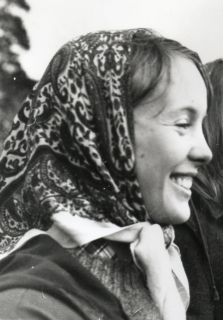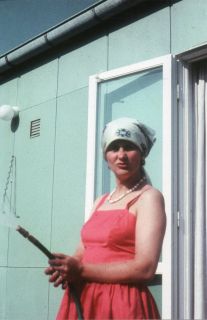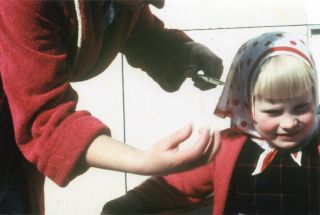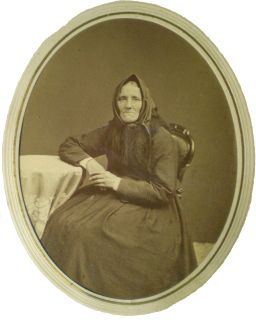|
Scarfs: fashionable
- but not today and not here |
|
”Proclaim Liberty Throughout All The Land Unto All The Inhabitants Thereof” claims one souvenirscarf from USA that I inherited. It is a needed exhortation now when scarfs and shawls have become symbols instead of useful garments or fashion articles. As late as a couple of years ago I saw more women with scarfs, but today I see only moslem shawls. I am the only stubborn one: I always use scarfs when I need protection against wind or cold, except when its beastly cold. A scarf is perfect as it protects ears and the top of the head, but lets out heat and sweat in the back. You see my 21 scarfs above.
Until lately I have put on scarfs naturally, but nowadays I have to fight a resistance, a self censoring. And I am not alone with this feeling of resistance against scarfs and shawls: a friend told me that she earlier often used long shawls loosely laid on her head and shoulders, as she found this pleasant and elegant. But since shawls became Islamic symbols in Sweden, she has stopped even though she has never got any comments on her shawls. |
|
I have grown up with "scarfs"; when I was a child Swedish fashionable women used the English term with Swedish pronunciation instead of our ”sjalett”. My grandmother, originally from Småland, said ”skarrf” with a lovely burring r. Mother used scarfs, both my grandmothers used scarf, my sister and I had scarfs.

An aunt told me that in the 1940ies all women used scarfs in damp weather, as the scarf was said to hinder the hair going straight; everybody wanted curly hair and most was forced to use curlers every night. Those who had to go errands with curlers in their hair, always put an scarf on to hide them. |
|
 
Mother in the sun 1961 and in a local dress from Värend in Småland, 1979.

Little sister gets her hair cut 1960. |
|
Lisa Maria Danielsdotter, born 19 March 1817, on a photo taken before 1885. The Swedish National Encyclopedia states that shawls were high fashion then. This quote (translated by me) is primarily about Sweden: ”Shawls became a fashion novelty during the second part of the 1800th century when the import of Cashmere shawls from India started. They became so popular that imitating productions of so called genuin shawls soon started in Europe. In the 1790th, when Classic time (the Antique) was the ideal, shawls were indispensable fashion accessories. Shawls remained fashion during the 1900th century, when it was also used as outer garment, but when working class women around 1860-70 begun using shawls as en extra warming garment, shawls went out of fashion. Shawls then became more or less a class marker. As a fashion novelty, especially with evening dresses, the shawl came back in the 1950th. Shawls have also been used in ideolocially based fashion since 1960."
She was my maternal grandmother’s paternal grandmother, and lived in Nykyrka, Nye. |
|

|
|
Forgotten in today’s Swedish discussions about the Moslem shawls are that many women in Sweden have personal memories of rules concerning coercion to shield hair etc. within both the protestantic and catholic churches. Those, and many others, feel forced back in time when the amount of women wearing niquab, burkas and other varieties grow in Sweden. A friend living part time in Tunisia, stated that she sees many more Moslem shawls in Gothenburg’s suburbs than i Tunisia.
If you in a search engine seek for pictures made by the Swedish painter Carl Wilhelmson you hopefully will find paintings depicting women from fishing villages in Bohuslän, wearing typical scarfs. And if you put the following combinations of words and names into your search engine you will see many examples of how scarfs were used 1940-1960, not always as head gears though: head scarf marilyn monroe, head scarf brigitte bardot, head scarf audrey hepburn, head scarf sophia loren. |
|